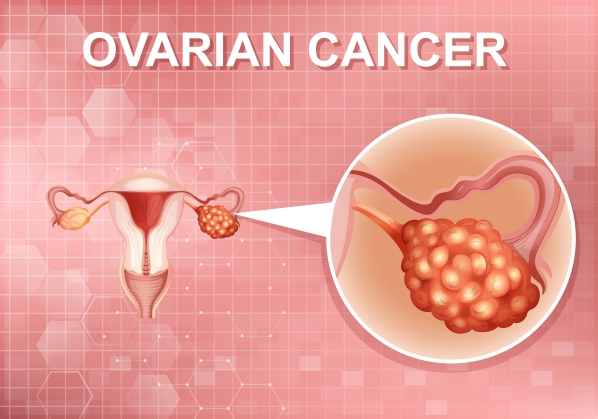What is polycystic ovarian syndrome?
Polycystic ovarian syndrome (PCOS) is a disease which affects young women of reproductive age. This hormonal disorder affects the production and metabolism of hormones. Women with PCOS have menstrual dysfunction- menses may be infrequent or prolonged. In addition your ovaries may not produce any eggs which results in infertility and is known as anovulation. Furthermore, there may be presence of excess male hormones and this is known as hyperandrogenism.
In the United States, PCOS is one of the most common endocrine disorders (disorders affecting the endocrine system which is responsible for the production of hormones). Up to 10% of gynaecological visits end up with the diagnosis of PCOS.
What are the causes and risk factors of polycystic ovarian syndrome?
Unfortunately, the exact cause of PCOS is not known. However, there might be some factors which increases your risk of developing PCOS and these include:
- Insulin resistance: Insulin is a hormone produced by the pancreas to lower your blood sugar level. This condition occurs when your body does not respond to your insulin well and this results in elevated blood sugar levels.
- Hyperinsulinemia: This is when there is excess production and secretion of insulin by the pancreas. This may occur as a result of insulin resistance in an attempt to lower your blood sugar level despite the insulin being less efficient. This may also affect your liver production of sex hormones which contributes to the development of the disease.
- Family history of PCOS: Having a parent or sibling affected by PCOS increases your risk of developing it.
- Hyperandrogenism: This is when your ovaries produces too much male hormones which results in acne and hirsutism- this is a condition in women that results in the excessive production of male-like pattern of dark hair in the face, chest and back.
- Obesity: Obesity makes you more prone of developing PCOS.
- Diabetes mellitus: being affected by diabetes mellitus increases your risk of developing PCOS.

What are the signs and symptoms of polycystic ovarian syndrome?
The sign and symptoms of PCOS may develop in response to obesity or develop during puberty around the time of your first menstrual period. At least two of the following signs and symptoms must be present in order to make the diagnosis of PCOS:
- Hyperandrogenism
- Irregular menstrual period
- Cysts in your ovaries
Hyperandrogenism may result in some signs and symptoms such as:
- Hirsutism
- Male-pattern hair loss
- Increased muscle mass
- Voice deepening
Menstrual abnormalities occur as a result of long-term anovulation. Your menses may be irregular or prolonged. Anovulation will eventually lead to infertility.
Many women experience daytime somnolence, episode of apnoea (cessation of breathing) during sleep and loud snoring due to obstructive sleep apnoea. This condition occurs when the muscles in your throat relaxes and results in the narrowing or closure of your airways which results in apnoeic episodes.

Acanthosis nigricans is when your skin becomes velvety and dark. It may be present under your arms or breasts, at the nape of your neck, elbows and knuckles.
Your doctor may find an ovarian mass upon abdominal examination which may be a tumour or a cyst which is a collection of fluid within a membranous tissue.
In addition, your blood pressure may be elevated.
PCOS may resemble other disorders and these include:
- Hypothyroidism
- Familial hirsutism
- Cushing syndrome
- Hyperthyroidism
- Use of drugs such as androgenic progestins

Making a diagnosis
To make a diagnosis, your doctor will first take a detailed history from you to know more about your symptoms. After the history taking, your doctor will perform a thorough physical examination to look for signs of PCOS. To make the diagnosis of PCOS, your doctor must rule out all other disorders which can cause menstrual irregularity and hyperandrogenism. To confirm the diagnosis, your doctor may order some tests, including:
- Testosterone level: Hyperandrogenism is tested by measuring the total and free testosterone levels. Androstenedione levels are also elevated.
- Follicle-stimulating hormone (FSH) level: FSH levels must be measure to rule out primary ovarian failure.
- Luteinizing hormone (LH) level: The LH to FSH ratio is typically 1:3.
- Thyroid-stimulating hormone (TSH) level: TSH level is measured to rule out hyper or hypothyroidism.
- Glucose, insulin and lipids levels: These are measured in order to rule out diabetes mellitus.
- Ultrasonography: Ovarian ultrasonography is obtained by placing the probe inside the vagina and this is known as transvaginal ultrasonography. It is used to assess for the presence of cysts and the thickness of the uterus.
- Computed Tomography (CT) and Magnetic Resonance Imaging (MRI) scans: These scans are used to better assess the ovaries and adrenal glands. They are also useful in people who cannot perform transvaginal ultrasonography due to obesity.

What is the treatment for polycystic ovarian syndrome?
Lifestyle modifications are first-line treatments for people affected by PCOS. The lifestyle modifications include weight loss and regular physical exercises. These modifications can help you to regain a normal ovulatory cycle and increase your chance of getting pregnant.
There are certain drugs which can be used to treat PCOS. Oral contraceptive pills are first-line medications to manage menstrual dysfunction.
Clomiphene citrate is the treatment of choice to induce ovulation in women who want to get pregnant. If clomiphene citrate is not effective, metformin and letrozole combination medication can be used.
 If you are diabetic, your doctor will prescribe metformin which can decrease your hormone levels and at the same time reduce your blood sugar level.
If you are diabetic, your doctor will prescribe metformin which can decrease your hormone levels and at the same time reduce your blood sugar level.
Eflornithine with laser treatment is used to treat hirsutism. It is a topical cream to slow hair growth.
There are some medications which can decrease your hormone levels and these drugs are known as antiandrogens. Examples include spironolactone, leuprolide and finasteride.
What are the complications of polycystic ovarian syndrome?
If PCOS is left untreated, several complications may ensue and these include:
- Type 2 diabetes
- Obstructive sleep apnoea
- Infertility
- Diabetes and high blood pressure during pregnancy
- Miscarriage
- Non-alcoholic fatty liver disease
- Depression
- Endometrial cancer- cancer affecting the uterus
- Eating disorder
- Anxiety
- Abnormal bleeding from the uterus
Prognosis
People affected by PCOS are at increased risk of developing cardiovascular and cerebrovascular disease. 40% of women with PCOS have insulin resistance and as a result they are at increased risk of developing type 2 diabetes. Unfortunately, people with PCOS are more prone to develop cancer of the uterus. However, seeking medical advice early is key to relieve your symptoms.

Source:
J. Alastair, I. and Simon, M., 2016. Davidson's Essentials of Medicine. 2nd ed. London: ELSEVIER.
Parveen, K. and Michael, C., 2017. Kumar & Clarks Clinical Medicine. 9th ed. The Netherlands: ELSEVIER.
Lucidi, R., 2020. Polycystic Ovarian Syndrome Treatment & Management.








